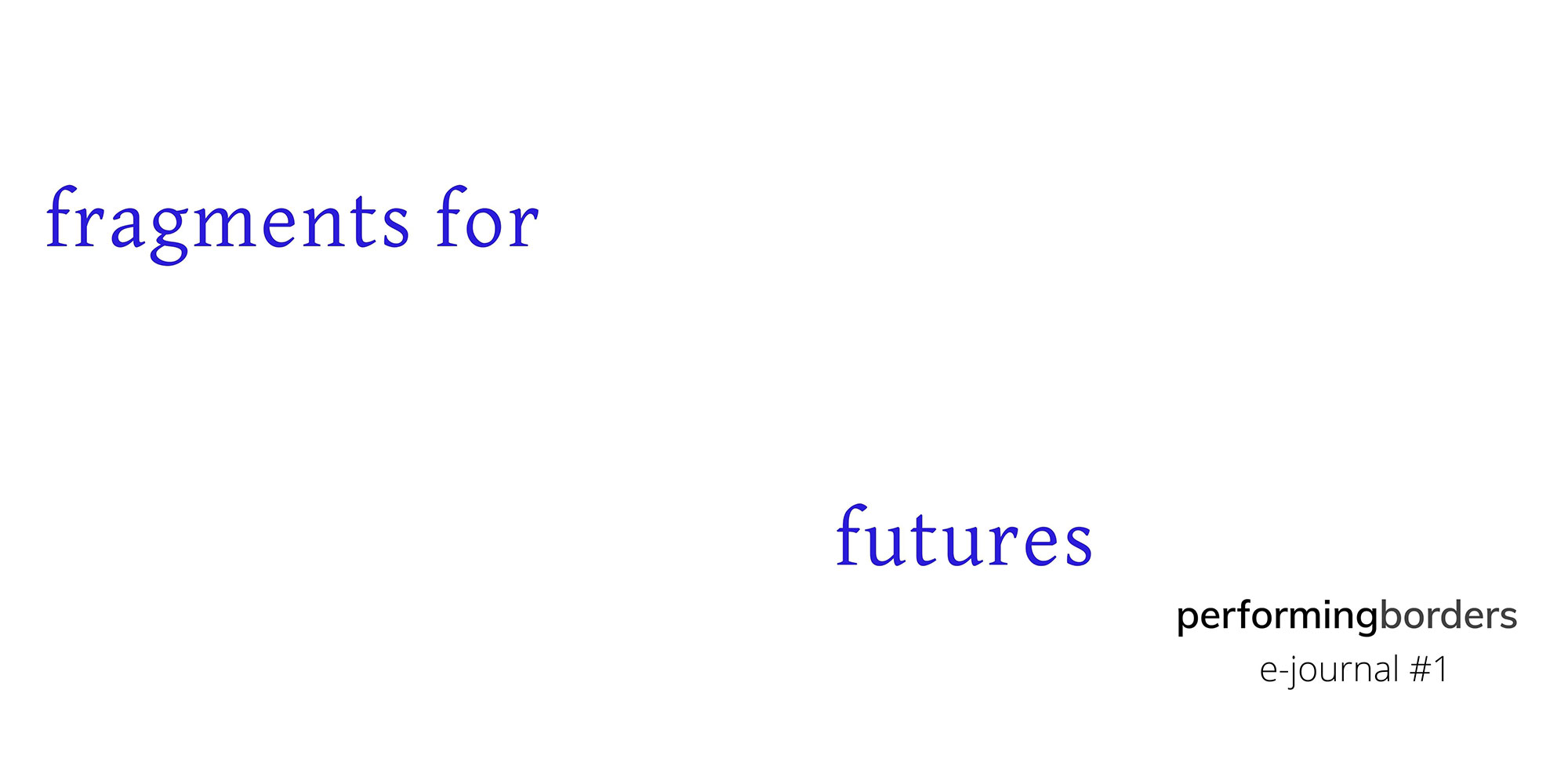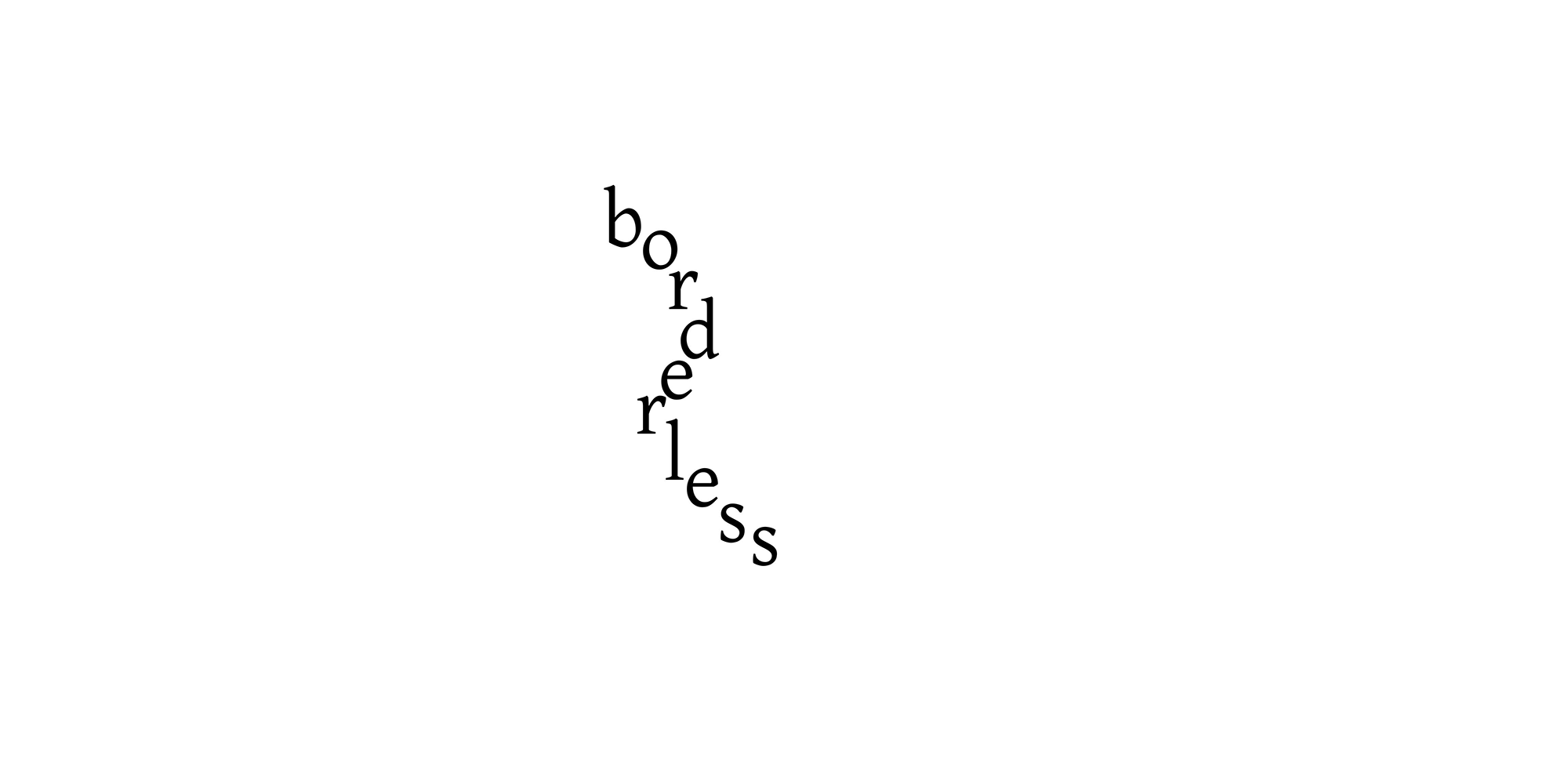- Introduction | Fragments for Borderless futures
- Elena Marchevska | There is no future
- Tara Fatehi Irani | a place to sit
- Syowia Kyambi | Holding Space
- Jade Montserrat | A text on borders dedicated to my Border Terrier (Jack Russell cross), Hilda, who will be one year old on 29 September 2021
- Manuel Vason | urgent images
- Vijay Mathew | How do we increase access and inclusion while powering down civilization?
- Sagar Shah & Jemima Yong | IN CRISIS: GET YOUR COMMS HEAD ON
- contributors + credits
- Download PDF


Welcome to performingborder’s first e-journal – we’re happy to have you here ☀
We hope that this will be the first in a yearly series, creating a space to collectively reflect on borders, live art, community, and resistance.
We want these journals to be a space that centres embodied knowledge and artist perspectives, challenging academic spaces as the only spaces for knowledge production. This is a site to reclaim our collective capacity to create and share, to continue to proliferate our thinking and to create nourishing feedback loops through each other’s working practices, research, writing and experiences.
The 2021 issue focuses on fragments for borderless futures. This theme slowly emerged in the past year from the conversations we have been having with our collaborators and is part of a wider re-thinking of what kind of platform we want to create and how performingborders should work: moving towards a horizontal network and focusing on internationalism and transnational collaborations. In doing this, we will continue to explore, dissolve, and challenge borders based on lived experiences, focusing on their intersectionality and multiple interpretations.
This issue of the journal focuses not only on thinking about what borderless futures could be and how we see fragments of them already in process, but also reflects on what seems impossible about getting there. This collective thinking has allowed us to look at new ways in which we can expand both in our artistic and intellectual landscapes and continue to slowly build (even in fragments) multiple paths towards borderless futures, imagined and real.
What are the (im)possibilities for borderless futures?
As a response to this prompt, we have received rich contributions full of reflections and questions, each with its own texture and interpretation of border/borderless. In Elena Marchevska’s text, we are challenged to consider the impossibility of a single borderless future and the necessity to consider fragmented experiences in our interpretation of future/s. Many voices speak through Tara Fatehi Irani’s performative reflection a place to sit, which through movement and narration follows stories of borders from three Afghanistani women – Bibi Gol Azad, Fatema Tavasoli, Nazari – and considers the felt experience of borders, moving through time, the body and memory. Syowia Kyambi explores borders and borderlessness in the collective in her writing about holding space and sheltering. Through a meandering text, Jade Montserrat creates a constellation of references spanning poetry, performance and activism. In Manuel Vason’s visual essay urgent images, we are encouraged to contemplate the evaporating boundary between the performer and the camera, considering our relationship to the medium. In Vijay Mathew’s text we are urged to consider the implications of working across borders and the increasing tax that this takes on our environment. Finally, Jemima Yong and Sagar Shah get their comms heads on and consider the important boundary between the self and the institution in times of crisis – presenting three acts that question not only institutional response but where power, self, and the individual exist within institutional work.
Thank you to our wonderful collaborators who have contributed to this journal, your thinking is integral not only to this work but also to the community that we want to build with this platform.
Thank you to Necessity Fund and Arts Council England for supporting this work.
With warmth and hopeful borderless rage,
performingborders